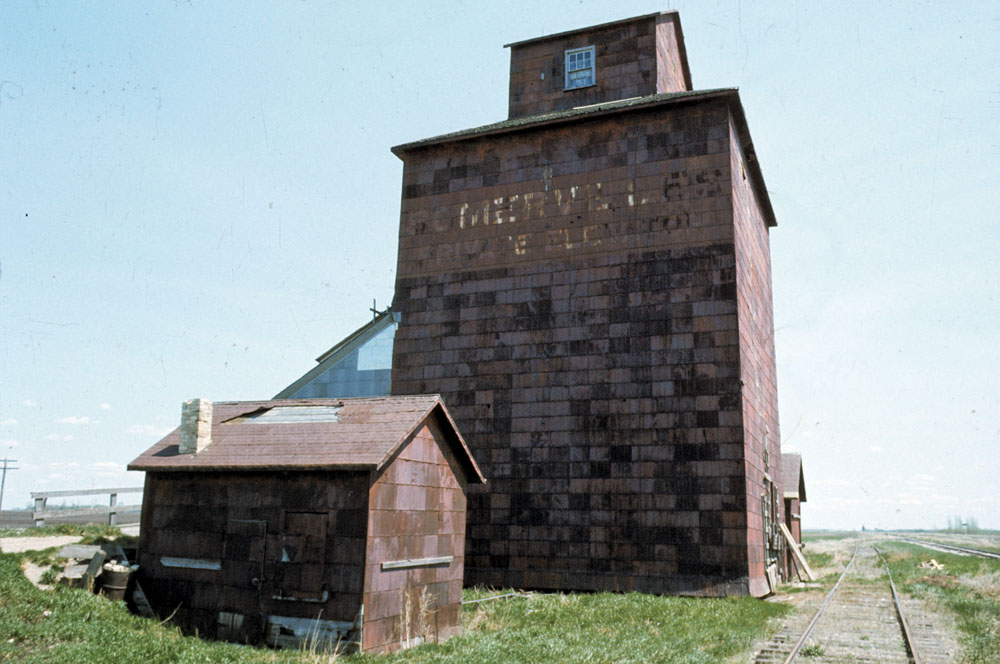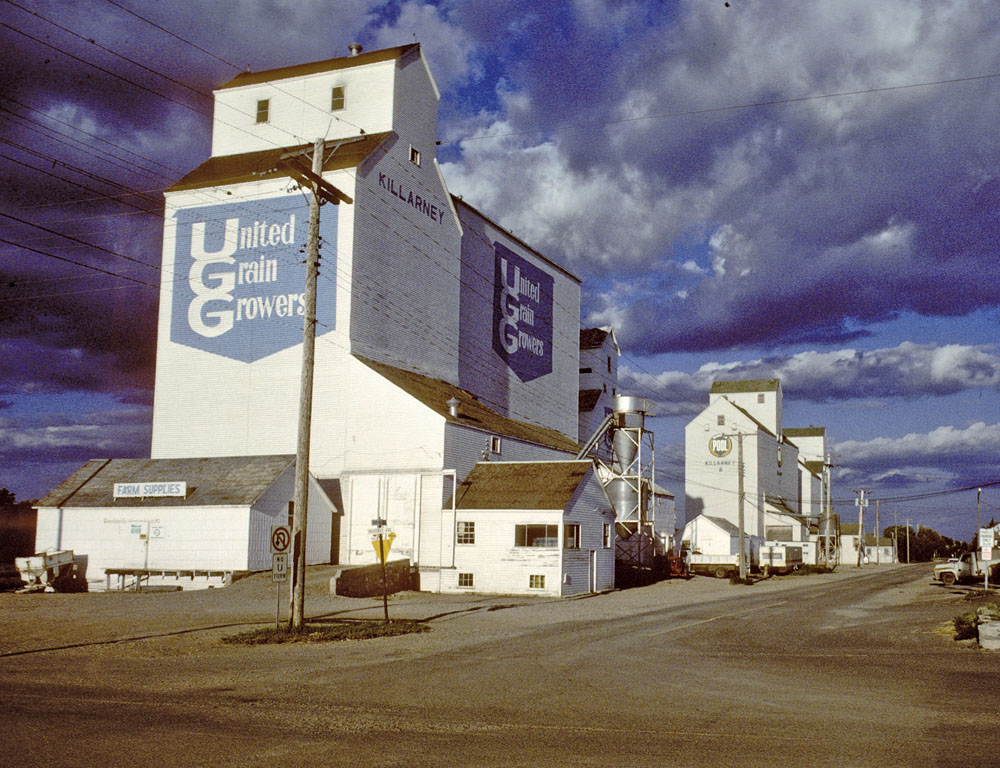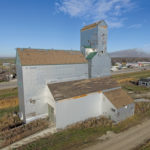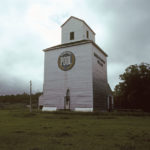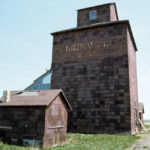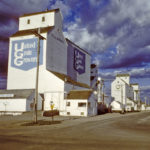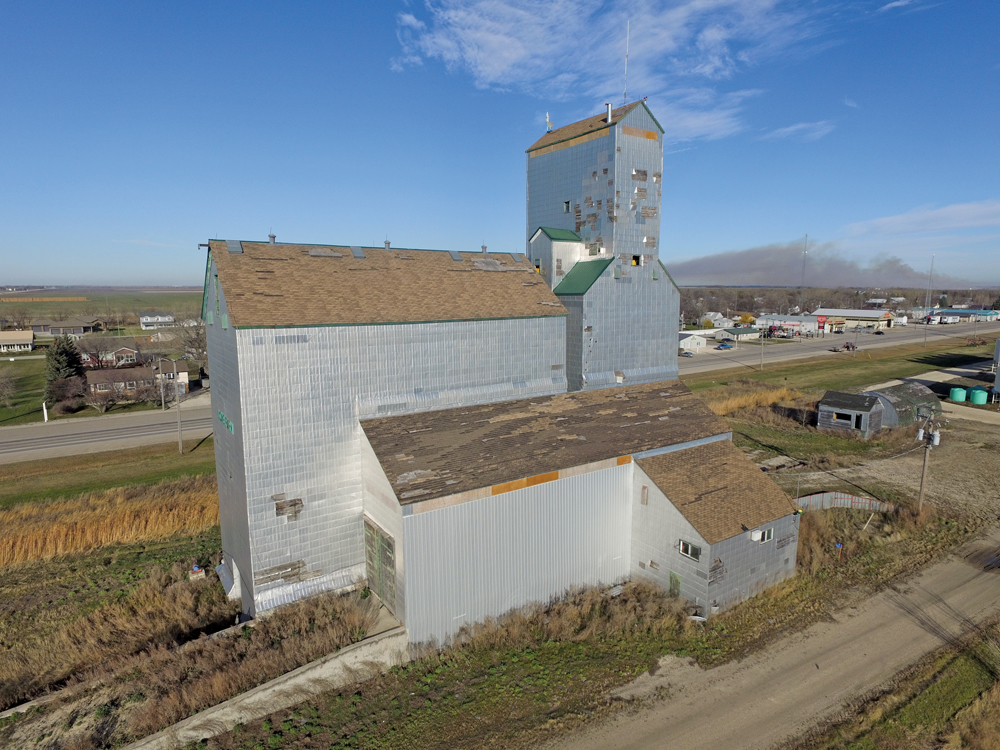
Lowe Farm Pool_CMYK.jpg
Built in 1937, with a crib annex added in 1956, a 125,000-bushel elevator at Lowe Farm, in the RM of Morris, was operated by Manitoba Pool and, after 1998, by Agricore. In 2001, it was sold into private ownership along with several others around the province. It was put up for sale again in late 2014, along with the former Pool elevator a few miles away, at Homewood.
Photo: Gordon Goldsborough
Austin Pool_cmyk.jpg
This squat little elevator at the Manitoba Agricultural Museum was built at Austin in 1901 by the Western Canada Flour Company. With a capacity of just 20,000 bushels, it was sold to Manitoba Pool in 1950 and converted into an annex. In early 1976, in commemoration of the company’s 50th anniversary, the elevator — one of the oldest survivors in Canada — was moved to the museum and restored as part of the Homesteaders’ Village.
Photo: Historic Resources Branch
Argue Private_CMYK.jpg
A small wooden elevator at the railway siding of Argue, southeast of Hartney on the long-abandoned CNR Hartney Subdivision, was built around 1918 by the Ogilvie Flour Mills Company. Closed in 1946, the elevator was sold and used for private grain storage by Somerville Brothers Farms from 1951 to 1965. It was still standing at the site as recently as the mid-1990s.
Photo: Historic Resources Branch
Killarney UGG_cmyk.jpg
The last remaining wooden grain elevator in Killarney was built in 1953 by United Grain Growers. Seven years later, its initial 100,000-bushel capacity was expanded to 192,000 bushels with the construction of a crib annex on its east side. In late 1999, with newly opened inland terminals nearby that were several times its size, the elevator was sold to Paterson Grain. The building is slated for demolition later this year.
Photo: Historic Resources Branch
In the 1950s, there were over 700 grain elevators in Manitoba. Today, there are fewer than 200. You can help to preserve the legacy of these disappearing “Prairie sentinels.”
The Manitoba Historical Society (MHS) is gathering information about all elevators that ever stood in Manitoba, regardless of their present status. Collaborating with the Manitoba Co-operator it is supplying these images of a grain elevators in hopes readers will be able to tell the society more about it, or any other elevator they know of.
MHS Gordon Goldsborough webmaster and Journal editor has developed a website to post your replies to a series of questions about elevators. The MHS is interested in all grain elevators that have served the farm community.
Read Also

Port of Churchill revamp gathers pace
Canada’s Port of Churchill Plus update plan hopes to expand trade, including agriculture trade, at Manitoba’s Arctic sea port
Your contributions will help gather historical information such as present status of elevators, names of companies, owners and agents, rail lines, year elevators were built — and dates when they were torn down (if applicable).
There is room on the website to post personal recollections and stories related to grain elevators. The MHS presently also has only a partial list of all elevators that have been demolished. You can help by updating that list if you know of one not included on that list.
Your contributions are greatly appreciated and will help the MHS develop a comprehensive, searchable database to preserve the farm community’s collective knowledge of what was once a vast network of grain elevators across Manitoba.
Please contribute to This Old Grain Elevator website here.
You will receive a response, by email or phone call, confirming that your submission was received.
Goldsborough is especially interested in determining when elevators were demolished. Readers with photos of elevator demolitions and dates of when these occurred can contact him directly at [email protected] or call 204-782-8829.


